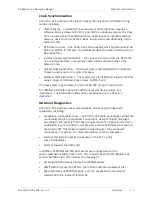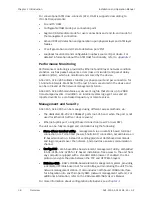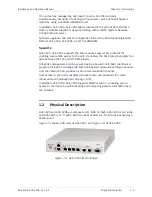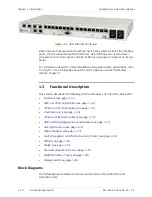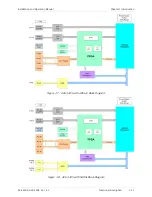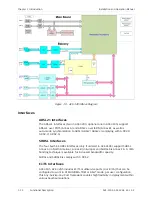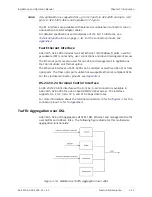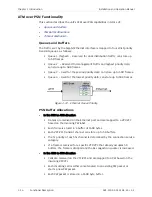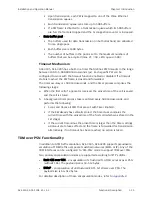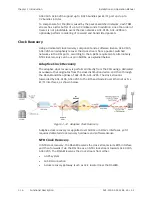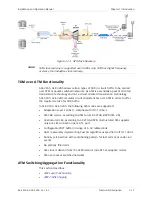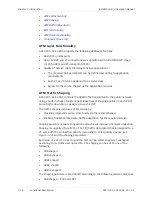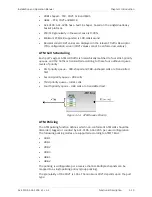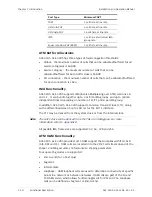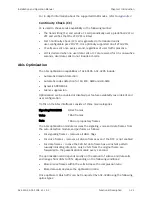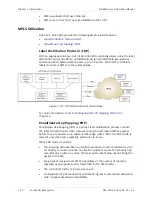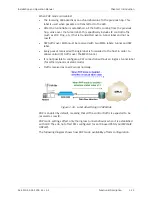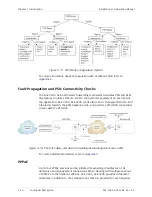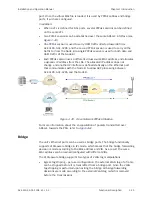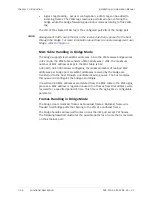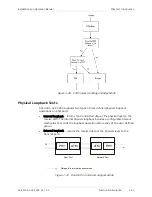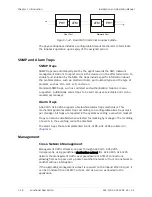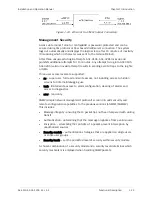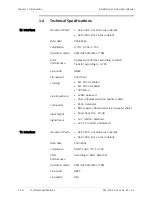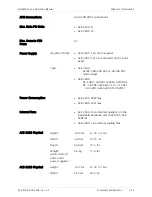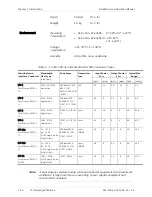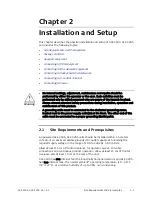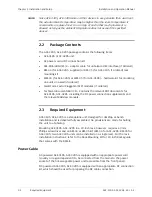
Installation and Operation Manual
Chapter
1 Introduction
ACE-3105, ACE-3205 Ver. 5.2
Functional Description
1-21
For in-depth information about the supported OAM modes, refer to
Continuity Check (CC)
CC is used to check service availability in the following manner:
•
The transmitting (Tx) end sends a CC cell periodically over a predefined VCC or
VPC and verifies that the VCC/VPC is intact.
•
F4/F5 Continuity Check (CC) cell is generated or terminated and is
user-configurable per VCC/VPC. It is optionally supported on all VCCs/VPCs.
•
CC cells are sent once every second, regardless of user traffic presence.
•
LOC is declared when no user data cells or CC are received for 3.5 consecutive
seconds. User data cells do not include AIS cells.
Abis Optimization
The Abis optimization capabilities of ACE-3105, ACE-3205 include:
•
Automatic timeslot detection
•
Automatic codec detection for FR, EFR, AMR and HR-AMR
•
Dynamic GPRS/EDGE
•
Silence suppression.
Optimization can be enabled or disabled per feature availability (as ordered) and
user configuration.
Traffic on the Abis interfaces consists of three main categories:
Signaling/O&M/SMS
HDLC frames
Voice
TRAU frames
Data
TRAU or proprietary frames
The Abis optimization module receives the signaling, voice and data frames from
the auto-detection module and performs as follows:
•
For signaling frames – removes all HDLC flags
•
For voice frames – removes all silence frames even if the DTX is not enabled
•
For data frames – in case the 320-bit data frame has a constant pattern
(usually indicating idle data), only 32 bits from the original frame are
forwarded to the packetization module every 1 second.
The optimization ratio depends mostly on the amount of silence and data calls,
and ranges from 30% to 70%, depending on the following conditions:
•
More silence frames within the calls increase the compression ratio
•
More data calls decrease the optimization ratio
Once optimized, Abis traffic can be transported by ACE-3200 using the following
uplink types:

